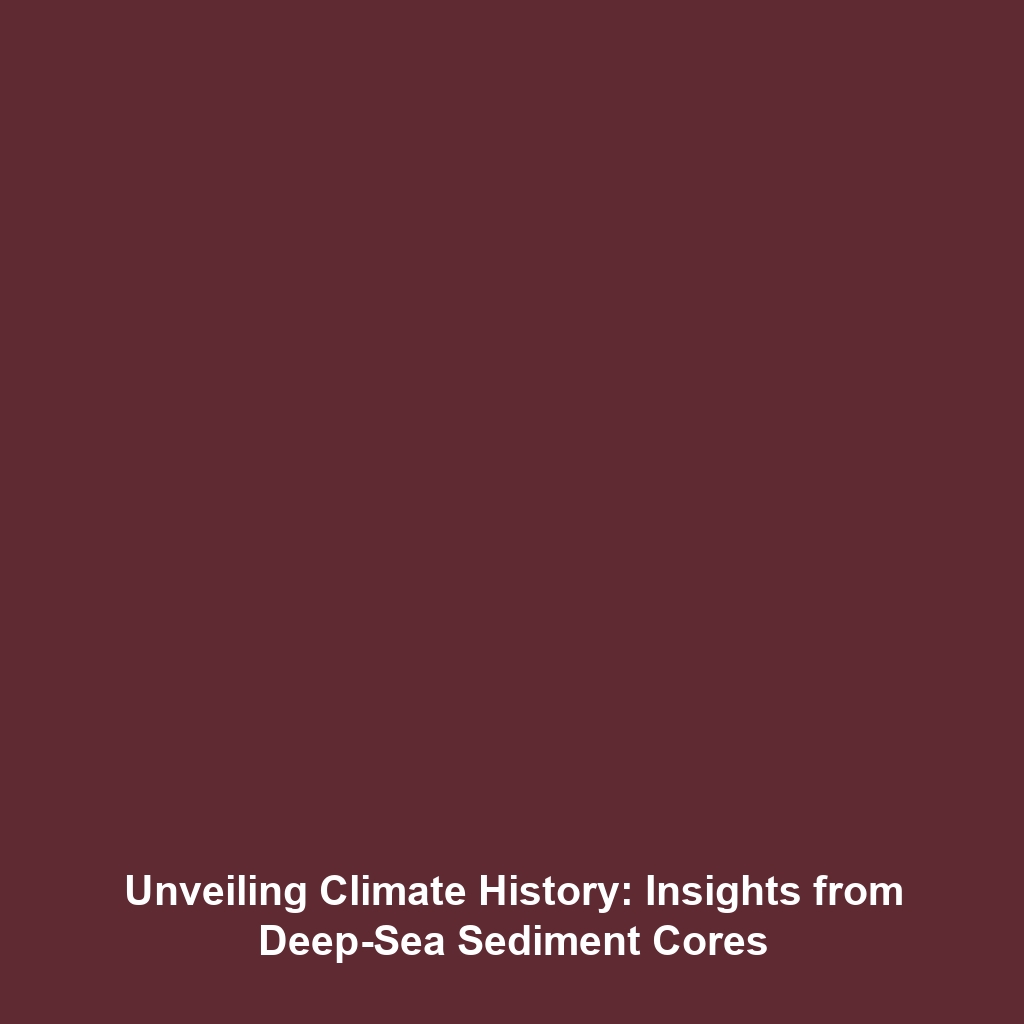Analysis of Deep-Sea Sediment Cores to Track Climate Changes Over Millions of Years
Introduction
Understanding climate history is vital for predicting future climate trends. One of the most significant methodologies in climate research is the analysis of deep-sea sediment cores. These cores are invaluable as they provide a detailed record of Earth’s climatic shifts over millions of years. By studying the layered sediments, scientists can uncover historical data that reveals patterns and fluctuations in climate, allowing for a more comprehensive understanding of past and present climatic conditions.
Key Concepts
How Deep-Sea Sediment Cores Work
Deep-sea sediment cores are cylindrical sections of sediment extracted from ocean floors. These cores encompass various layers that represent different geological and climatic epochs. Through radiometric dating and analysis of micropaleontological content, researchers can determine the age and environmental conditions corresponding to each layer.
Significance in Climate History
This analysis is pivotal for several reasons:
- Reconstructing past climates through proxy data.
- Understanding the impacts of natural and anthropogenic factors on earth’s climate systems.
- Providing insights into future climate scenarios by understanding historical behavioral patterns.
Applications and Real-World Uses
The analysis of deep-sea sediment cores has numerous applications:
- Climate Modeling: Helps in creating accurate climate models by providing historical climatological data.
- Policy-making: Informs policymakers regarding climate change effects, supporting environmental regulations based on past data.
- Natural Resource Management: Aids in managing fisheries and other marine resources by understanding ecosystem changes over time.
Current Challenges
While the analysis of deep-sea sediment cores provides invaluable insights, several challenges persist:
- High costs associated with deep-sea drilling technology.
- Accessibility issues in reaching certain sedimentary locations.
- Potential for contamination during core extraction that could skew data integrity.
Future Research and Innovations
Innovations in technology are poised to enhance the capabilities of sediment core analysis:
- Advanced Imaging Techniques: New imaging technologies are being developed to analyze sediment at micro and nano scales, offering deeper insights.
- Artificial Intelligence: AI is being explored for data analysis to identify patterns within vast datasets derived from sediment cores.
- Collaboration Across Disciplines: Increased collaboration among oceanographers, geologists, and climate scientists could lead to breakthrough studies enhancing climate history understandings.
Conclusion
In summary, the analysis of deep-sea sediment cores plays a critical role in tracking climate changes over millions of years, providing essential data for understanding climate history. As research progresses and technology evolves, the ability to decipher our planet’s climate narrative will only improve. For those interested in learning more about climate history, check out our articles on historical climate patterns and paleoclimatology techniques.

Leave a Reply